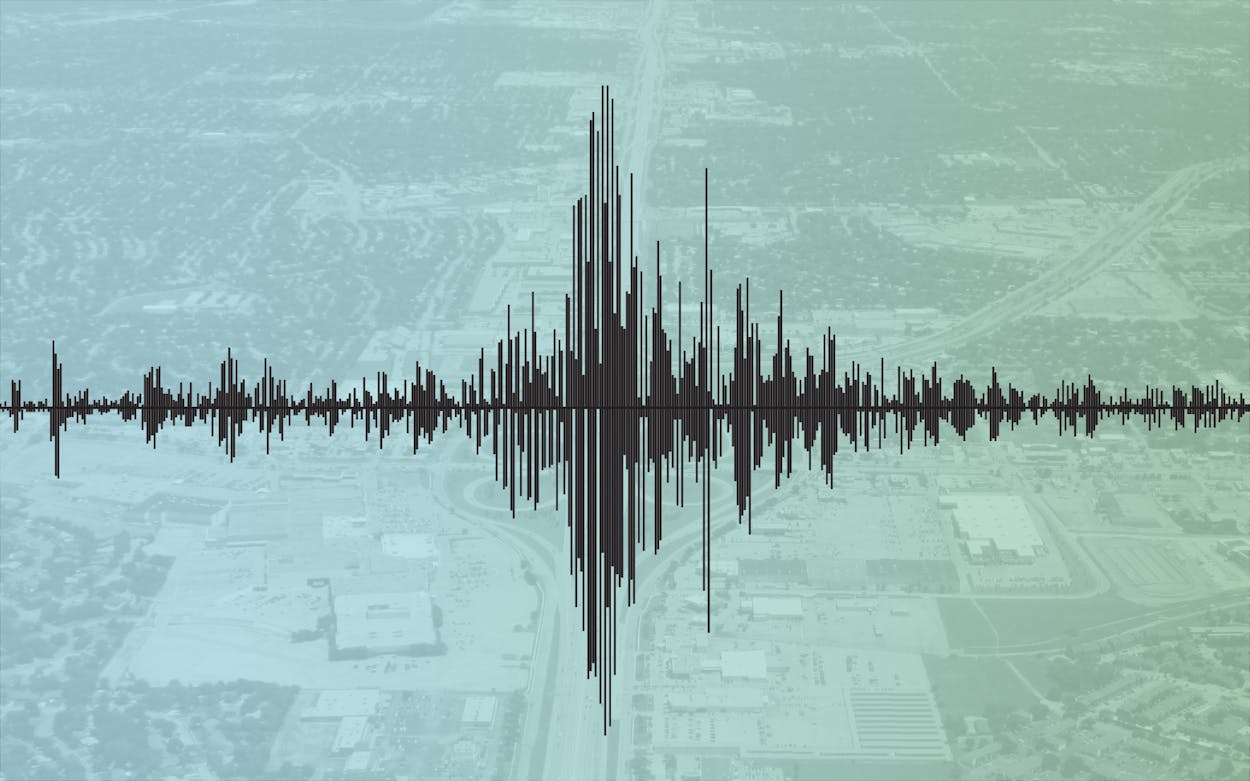This summer two earthquakes shook North Texas within just weeks of each other. The U.S. Geological Society (USGS) recorded temblors in the Irving area of magnitudes 3.1 and 2.7, on August 27 and September 1, respectively. The USGS did not record earthquakes of that magnitude and frequency in the region since before 2016, according to a recently published seismological report.
Earthquakes in North Texas have been correlated with drilling activities in the Barnett Shale geological formation, according to UT-Austin researcher Cliff Frohlich.
A team of researchers from UT-Austin and SMU led by Frohlich released a report last May outlining the history of induced earthquakes in Texas, including the uptake of seismicity near the Dallas–Fort Worth International Airport (DFW) from 2008 to 2013. The report definitively ascertains that the earthquakes felt near DFW were induced by human action because of “the absence of historical seismicity prior to injection, the proximity of the injection well to a known mapped fault, the onset of activity only six weeks after injection commenced in 2008, and the earthquake depths at and below the depth of injection.”
Seismologists like Frohlich posit that the drilling rigs’ injection of wastewater deep into the ground can induce earthquakes because the injection increases pressure buildup within the Earth’s crust. The connection between minor (that is, with a magnitude below 5) earthquakes and oil and gas operations are difficult to ignore, especially when looking what lies below the Dallas-Fort Worth metro area: the Balcones Fault Zone. The fault spans from San Antonio to Dallas and is seismically dormant for the most part. However, high pressure wastewater injection into the fault zone could be what triggers North Texas’s earthquakes.
From these findings by Frohlich, it’s easy to make the leap to assume that the recent Irving earthquakes were induced by drilling operations because both epicenters occurred fewer than 5 miles away from the edge of airport property. But with the cost of natural gas dropping to close to $2 per Mcf (thousand cubic feet) at the end of 2015, a number of drilling companies pulled out of the Barnett Shale gas play. This slowdown of operations in the Barnett Shale over the last couple years makes such an assumption questionable.
However, according to Baker Hughes’ continuously updated Rig Count map, there are still four active gas rigs in the DFW area. One of these four rigs is situated only 2 miles away from the epicenter of the September 14 earthquake. The USGS reports the epicenter at being at a depth of 6.2 km, and Baker Hughes shows the gas rig operating at a well depth between 5 and 10 kilometers. It seems likely the wastewater injection caused the quake according to these reported data.
Assuming the injection did indeed cause the quakes, do these induced earthquakes pose any real threat to DFW residents? The answer depends on the magnitude capability of the Balcones Fault Zone, in other words, the size of the quakes that the fault zone is capable of producing. An archived USGS map from 2002 shows that the Balcones Fault Zone rests in a very low-risk area for earthquakes. This suggests that North Texans won’t need to worry about substantial quake damage or disruption, just the occasional wake-up rumble or fallen item from the fireplace mantel. As for the frequency of these earthquakes, that seems to correlate with the drilling activity in the Barnett Shale region. Unless the price of natural gas increases to make drilling operations more profitable (and currently natural gas prices are expected to stay low), I would only expect the occasional quake.
Philip R. White is a graduate research assistant in the Webber Energy Group at UT-Austin. His research interests include how Texans consume electricity and the intersection of policy and engineering within the context of energy. He can be found on Twitter at @whiphi.
- More About:
- Energy






